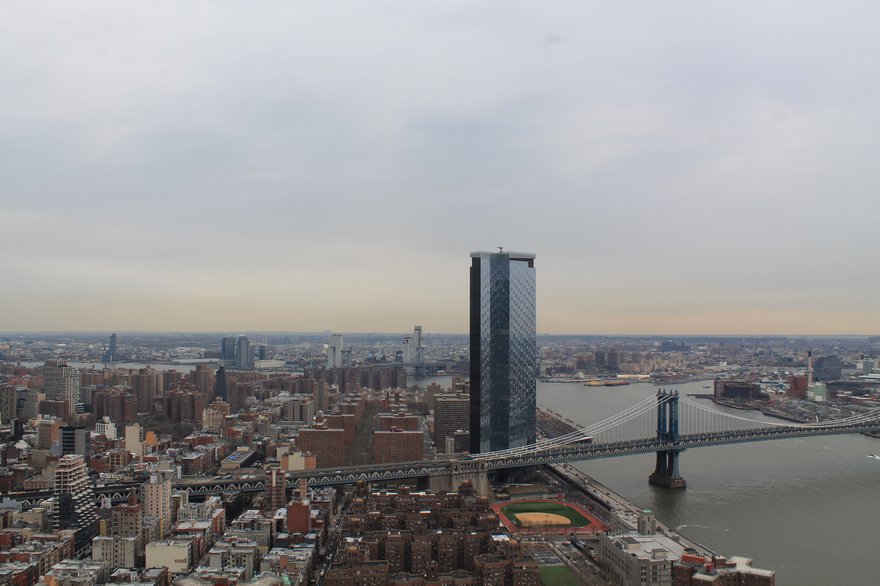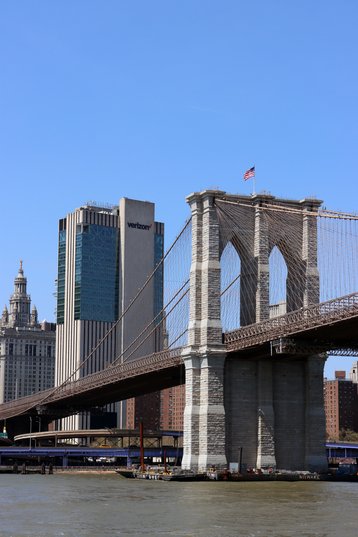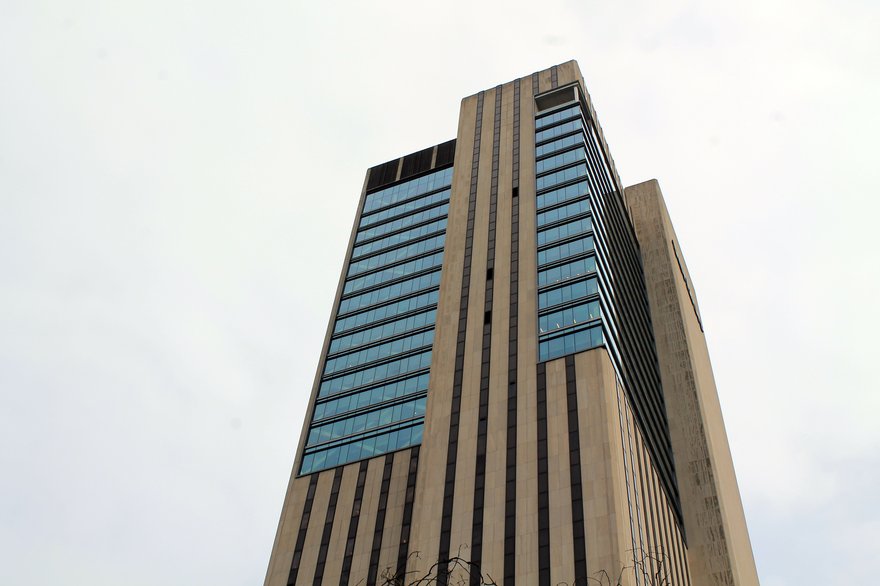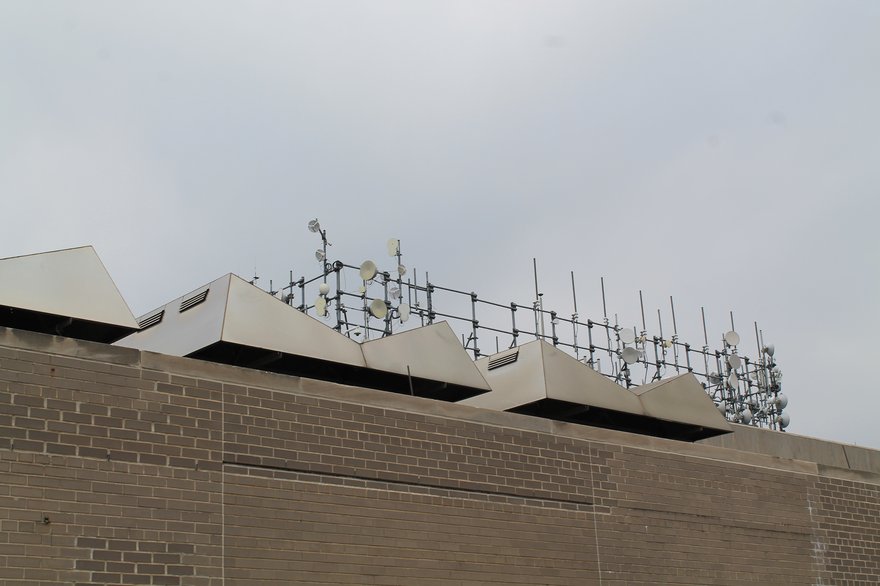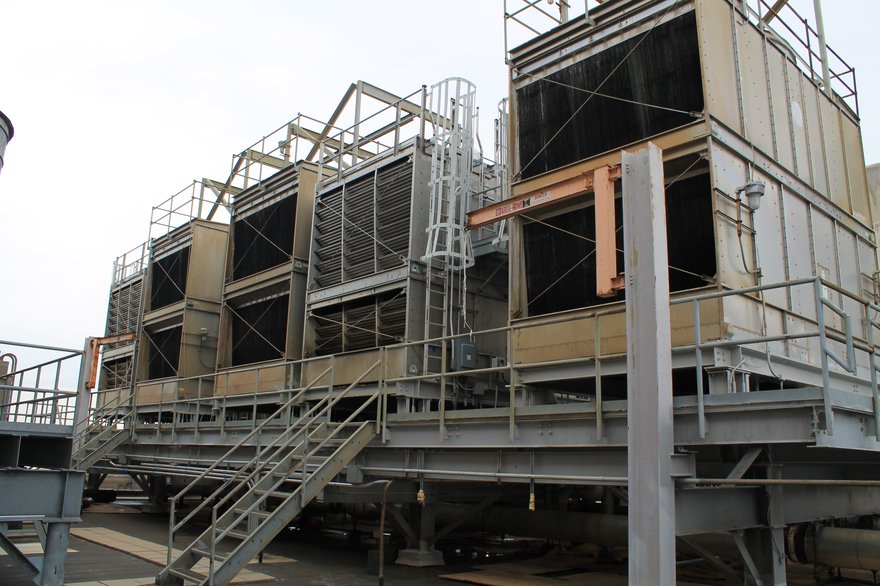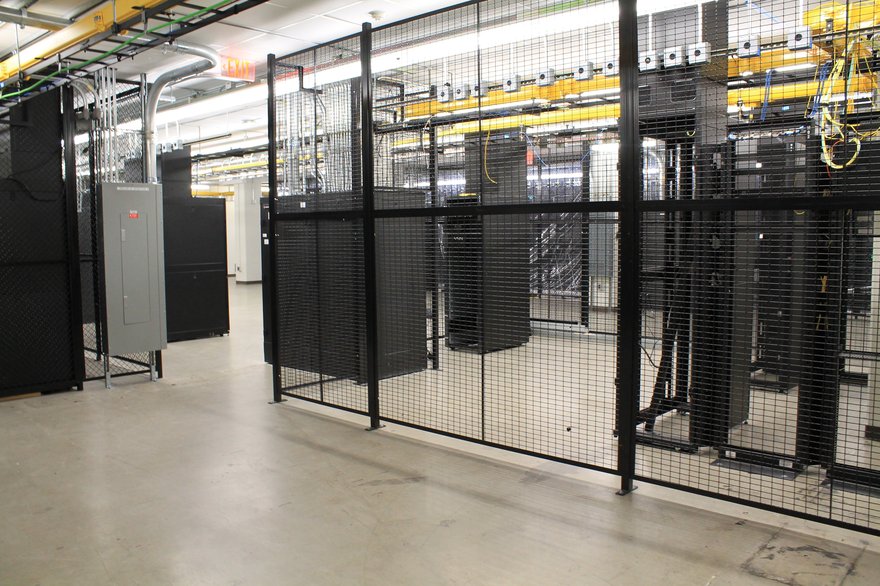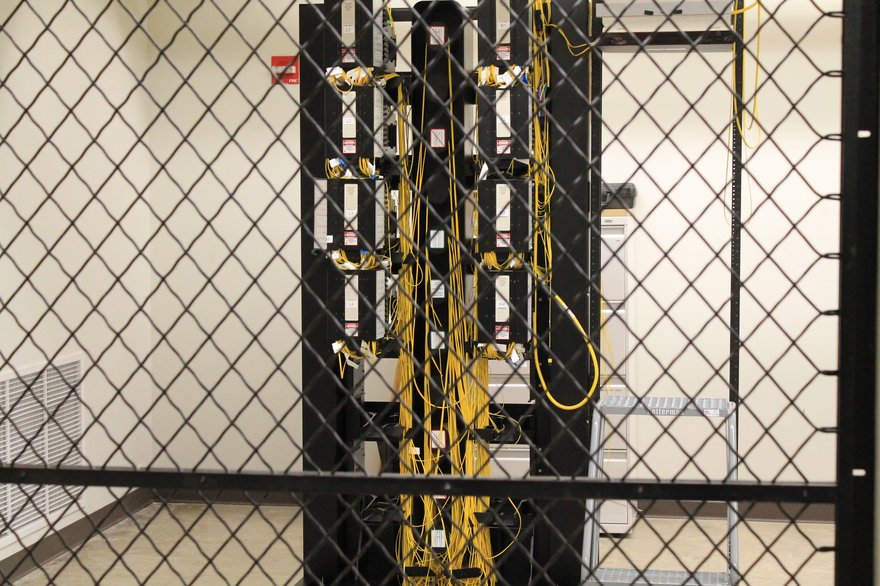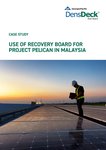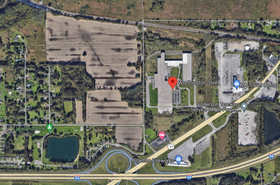The view across the East River is serene. On a cold March day skies blue and crisp, the Brooklyn Bridge stretches across its waters and, on the Manhattan side, comes ashore adjacent to 375 Pearl Street.
Also known as the Verizon Building, One Brooklyn Bridge Plaza or, since the building’s acquisition by Sabey Data Centers, SDC Manhattan, 375 Pearl Street is in fact a data center.
“It’s iconic,” says Dan Meltzer, managing director of sales at Sabey Data Centers, noting how the building is often a key feature in media shots of Manhattan. “Movie and TV producers shooting downtown focus on our building, because that view is so iconic - the Brooklyn Bridge, the Gehry building, and 375 Pearl Street.”
The building itself has faced some criticism over the years, architecturally speaking. In 2012, The Daily Telegraph named 375 Pearl Street the 20th ugliest building in the world. It has since undergone significant renovations, including replacing the top 15 floors with windows instead of limestone walls. More recent sentiment analysis conducted by Buildworld found that, despite these efforts, public opinion has not particularly changed - though the tower remains undeniably striking.
Of course, how the building looks on the outside is more or less irrelevant given what lies within.
Today, SDC Manhattan is a 32-story data center and office building spanning a total of 1.1 million square feet (~102,195 sqm).
The data center element of the building resides on the sixth, seventh, and twelfth floors.
It has a total power capacity of 18MW, but the three floors currently dedicated to data centers only use 5.7MW of that. The thirteenth floor offers a powered shell, and the eleventh floor is currently under construction to also accommodate data center customers.
The skyscraper was originally built in 1975 for the New York Telephone Company. Servers were installed after Sabey acquired 375 Pearl Street in 2011.
“In those days, it was completely a telecommunications central office and provided all the communications for downtown New York,” says Meltzer.
New York Telephone became 9X, and was later bought by Bell Atlantic which rebranded as Verizon in 2000. This was when the tower picked up its affectionate name of the Verizon building.
It was during this era that the 9/11 terror attacks happened at the Twin Towers, barely a 20-minute walk away from Pearl Street. Verizon and the building itself played a significant role in recovering communications for the area during the incident.
In a recollection of the event, a Verizon blog post notes the company lost three members of staff in the attacks: Donna Bowen, Derrick Washington, and Leonard White.
In the days that followed, thousands of Verizon employees risked their own safety (the air in Southern Manhatten was heavily polluted) by rushing to re-establish connectivity for residents and the New York Stock Exchange - the hub of America’s economy. A year later, the building was decked out with the Verizon logo - a badge that remains emblazoned on the site to this day.
The years that followed marked a seismic shift for the telecommunications industry. “The business changed,” explains Meltzer. “This was during the move to cable and different services, and Verizon started to sell some of its assets, and decided to sell 375 Pearl Street.”
The building was purchased by Taconic in September 2007 - which also owned 111 8th Avenue, now known as the Google Building - with plans to turn it into a residential tower, says Meltzer.
“But after the 2008 financial crash, they handed the keys back to the bank. One of our guys was looking at real estate and got a lead on the building, and Sabey was in a bidding war with Carlos Slim, the Mexican billionaire, and we won. The rest is history.”
Meltzer says that he joined Sabey “expressly with the idea of leasing in that building,” adding that despite having since been promoted within the company, 375 Pearl Street is still “[his] baby.”
The original plan - or “thesis” as Meltzer puts it - was for the entire skyscraper to be a data center. “It was going to be ‘the place’ for financial services companies. We were talking to the likes of Bloomberg, for example,” he recalls.
The thesis was, in theory, a sound one. The building’s location in Manhattan’s financial district means it is ideally placed to deliver digital services to nearby companies at low latency. “Unfortunately, Mother Nature had other plans,” Meltzer says. “Hurricane Sandy hit in 2012 and suddenly, our phone stopped ringing.
“People were telling us they had a mandate to move everything out of New York City. Things changed, and we had to get creative. Our solution was to create that office block.”
The office space is mostly taken up by the City of New York agencies, which have 20-year leases with the building - though one floor is home to the late architect Rafael Viñoly’s firm.
Viñoly, who died last year, leased the building in 2018, a mere two years after renovations kicked off to replace the facade with glass. The architect requested yet more changes including carving out a chunk of his leased 31st floor to make a personal balcony. From afar, the balcony can just about be seen.
The process of taking the Verizon Building and making it into the data center and office complex that it is today was a massive undertaking, Meltzer says. “We put in over $300 million just on the data center side,” he explains. “If you include the office block, it was probably half a billion dollars.”
While requiring a massive amount of investment, the building was in many ways ideal for the purpose. The floor loading varies between 150 to 400 pounds per square foot, and the ceiling heights are between 14ft-23ft. Running down the entire height of the building is a shaft where power, cooling, and cabling can be housed without taking up valuable real estate.
On the difficulties in transforming the facility, Meltzer says: “Data centers are also horizontal in nature, and at one point we were the tallest data center building on the planet - we possibly still are. We had to basically build vertically, and that meant craning in generators, and chillers. It was crazy.”
Now operational, the data center operates efficiently at a PUE of 1.3 to 1.35, and has an affordable high-tension service agreement with power company Con Ed for power delivered at 13,200V, which is then stepped down 480V.
When the local climate is cool enough, the site can use free air cooling. On the connectivity side, customers have a choice of 17 carriers - more than the average data center, and a perk of being located in a major metropolis. With the work now done, Sabey counts the City of New York agencies among its office customers, though only the Department of Sanitation for its data center services.
“One of my frustrations is that we thought the city would be great data center tenants,” Meltzer says. “The city of New York has 150-170 different agencies, and a big budget - the whole city has a budget of something like $100 billion.
“But we have just one data center client from the city, which is the Department of Sanitation. The reason for that is that during the winter months when there are snow storms, they need a very secure and reliable backup data center.”
When it comes to security, the data center benefits from being within the perimeter of the New York City Police Department, which means, as Meltzer puts it, it has around $50 million worth of security watching the building.
Overall, Meltzer calculates that the data center is currently 92 percent leased. But Sabey is hungry to find new customers, particularly from the financial services sector.
“The stock exchange itself is kind of like a symbol. All the trading actually happens in New Jersey,” he says. “The good news for us is that the major hedge funds and some of the financial institutions still are in NYC and want to be close to their servers. So we have seen success in that vertical.”
Of course, those hedge funds and financial institutions are predictably secretive with details about their data center footprint, so no specific companies were named. Meltzer is also hopeful that the artificial intelligence boom will benefit Sabey and its customers.
In terms of density, 375 Pearl Street can currently accommodate up to around 20 or 23kW per rack, but the facility is exploring ways to expand this. For one of its customers, Sabey is currently testing the feasibility of using liquid cooling in the facility.
“One of our clients already has a pilot for liquid cooling running in our building," he says, "and we are looking at potentially taking one of our floors and making it a mix air-cooled and liquid-cooled data center floor.”
Meltzer believes the building's infrastructure floors, which "are currently really dedicated to our equipment" might lend themselves to liquid cooling.
He explains: "The second floor, third floor, and the 11th floor could all make my thesis of us being an AI hub more interesting.
“For example, an investment banking firm could have their AI right at 375 Pearl Street and have almost zero latency right to their headquarters.”
Meltzer is confident Sabey is on track to see a return on its considerable investment in the tower. “We are on the right path for the building, and it will generate income,” he says. “Were we to ever sell the building, we would probably get a very nice return because you probably couldn’t do this building today with all the zoning, and the fuel and everything. It's very unique.”
Whatever the future holds, 375 Pearl Street will remain an important fixture on the New York skyline, and those who dislike the building’s aesthetics will likely continue to grumble.
Perhaps they should heed the words of Viñoly who, before his death, spoke at length to Metropolis about the importance of function over form. “I’m very interested in unglamorousness!” he said. “People don’t understand how important this kind of thing is.”

